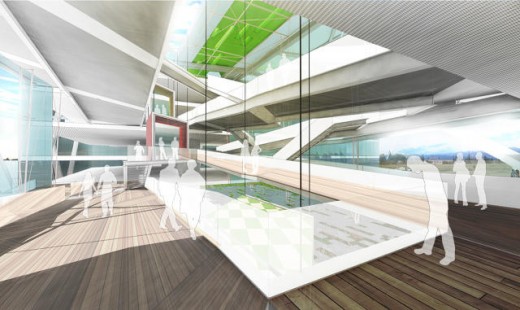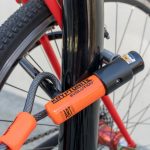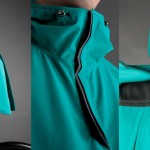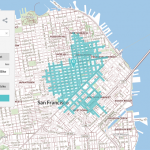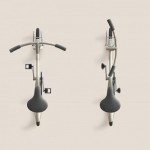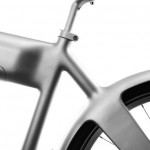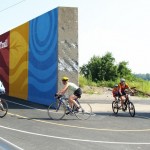Bike Right To Your Desk In This Ramped Office
Sorry cars, you’re not invited.
Realize it or not, most offices are built around driving, surrounding themselves in a moat of blacktop parking, or in the most extreme cases, even constructing entire buildings to obscure cars. What might an office look like if car culture disappeared?
For Fast Company’s special package on the New Rules of Work, we asked global architecture firm NBBJ to imagine the office of the future—a space where we might work in the year 2025 or beyond. And what they created is an evocative, car-less vision of the future. It’s an office built with physical fitness in mind, with a ramp leading in from the front door, and bike paths that allow you to ride right to your desk.
“The key ingredient is mobility, as we’re going to be wearing our computers, screens, and everything else. But even today, we have spectacular mobility as we aren’t chained to desks, files cabinets, and computers,” explains Scott Wyatt, chairman and partner of NBBJ. “We can start to create spaces that respond better to human needs than we’ve been able to do for a long time.”
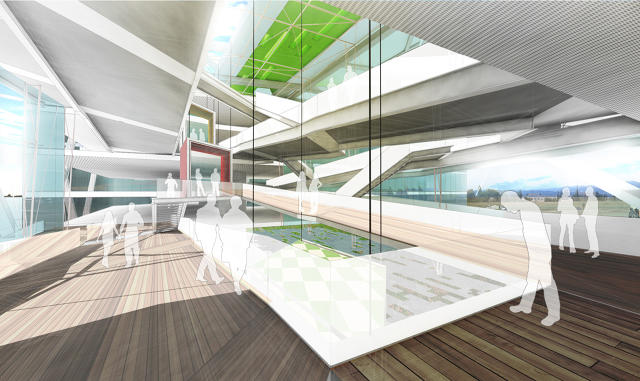
There are no stairs or elevators. Instead, the entire space is built on a seamless, switchbacking incline. The benefits of this graded layout extend beyond fitness: With no division between floors, that skyrise hierarchy of corporate culture, in which management, sales, and creatives are each ensconced in their own bubbles disappears. And the ramps create extensive sight lines, giving co-workers more opportunities to interact. It’s a response to a long-standing theory called the “Allen Curve,” which estimates that co-workers are four times more likely to regularly communicate with someone who’s six feet away than with someone who is 60 feet away—and that they’re unlikely to communicate with someone on another floor at all.
“When someone’s on a different floor, they’re almost in another county,” Wyatt says. “When you see someone 100 feet away, your chance of engagement goes up exponentially.”
The office is also designed to bring the outside in, by surrounding employees with plants and natural light. Dynamically shading glass, which actually exists, attenuates the latter to be at the perfect brightness throughout the day.
NBBJ proposes that the entire building could adapt to users’ needs. Sensors could ensure that there are enough loud and quiet zones (for people to socialize and get work done), and floor plates could move throughout the day to shape these spaces in real-time. And in a somewhat sci-fi twist, NBBJ imagines whole conference rooms that can construct themselves when needed, and even migrate workers around large campus-style complexes during meetings, taking them from building to building without missing a moment of productivity.
“When you don’t have to fill 50% of your space with conference rooms…things can begin to move,” says NBBJ partner Ryan Mullenix. Exactly what that might look like, NBBJ doesn’t claim to know, but the designers considered all sorts of moving conference room ideas, from gondolas to self-driving vehicles to meeting room drones in the sky. “There’s no stopping the conversation. You get in with the team, off you go.”
[All Images: courtesy NBBJ]
Fast Company , Read Full Story
(251)

